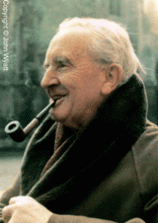The Fall of Arthur
Review
The Fall of Arthur
The historical legend of King Arthur, the ruthless and skilled leader who ruled the British Empire in the late fifth and early sixth centuries and successfully led their army in battle against the Saxon Empire, is one of the most frequently told histories ever recorded. Whether it is young Arthur in The Sword in the Stone, musical theater’s Camelot, Hollywood’s Excalibur, or even the farcical Monty Python-infused Tony-Award winning play Spamalot, the Arthurian legend has been popular fodder for many examples of artistic expression that has been enjoyed by people for centuries.
Much of the Arthurian legend has been passed down via various forms of folklore. The most famous collection of Arthurian tales are penned in Geoffrey of Monmouth’s 12th-century narrative entitled HISTORIA REGUM BRITANNIAE, translated as HISTORY OF THE KINGS OF BRITAIN. With all of this wealth of recorded history from which to draw, who better than Oxford-educated scholar J.R.R. Tolkien to add his own pen to the lengthy Arthurian legend.
"It is a pleasure in the year 2013 to have the opportunity to enjoy and savor an undiscovered work by the legendary J.R.R. Tolkien. It should soon become a very popular work to dissect and discuss in Literature classes around the globe."
THE FALL OF ARTHUR was a 40-page unfinished narrative poem that Tolkien began in the early 1930s and apparently put aside, abandoning the project altogether sometime around 1937. Coincidently, that was the same year he published a little novel called THE HOBBIT. The rest is history. Through painstaking research by his son, Christopher Tolkien, the current release of THE FALL OF ARTHUR not only provides readers with an opportunity to see Tolkien’s take on the King Arthur saga for the first time but also to look behind the scenes at an in-depth analysis into the creation of the poem and the impetus it may have provided for some of his Middle Earth works.
To begin with, Tolkien calls to mind epic works like BEOWULF with THE FALL OF ARTHUR. This was accomplished primarily with his dedication to penning the narrative and alliterative poem style that paid brilliant homage to earlier works of English history. The unfinished poem features an older King Arthur who is estranged from both Lady Guinevere and his noblest knight, Lancelot. He relies heavily on his greatest and most peerless knight, Gawain ---- also featured in the Tolkien novel SIR GAWAIN AND THE GREEN KNIGHT. Arthur’s primary adversary is his nephew, the traitorous Mordred, who crowned himself the King of Britain and wedded Guinevere.
To read THE FALL OF ARTHUR is to literally step back in time. The almost sing-song meter displayed in this poem allows the reader to glide along while bathing in the descriptive narrative that only Tolkien can muster. Christopher Tolkien’s lengthy discussions on the history of the Arthurian tradition of poetry, as well as the examples of how the Arthurian legend can clearly be seen in later J.R.R. Tolkien works such as THE LOST ROAD and THE SILMARILLION, will please his long-time readers to no end. It is a pleasure in the year 2013 to have the opportunity to enjoy and savor an undiscovered work by the legendary J.R.R. Tolkien. It should soon become a very popular work to dissect and discuss in Literature classes around the globe.
Reviewed by Ray Palen on May 24, 2013
The Fall of Arthur
- Publication Date: May 27, 2014
- Genres: Fiction, Historical Fiction, Poetry
- Paperback: 240 pages
- Publisher: Mariner Books
- ISBN-10: 0544227832
- ISBN-13: 9780544227835





